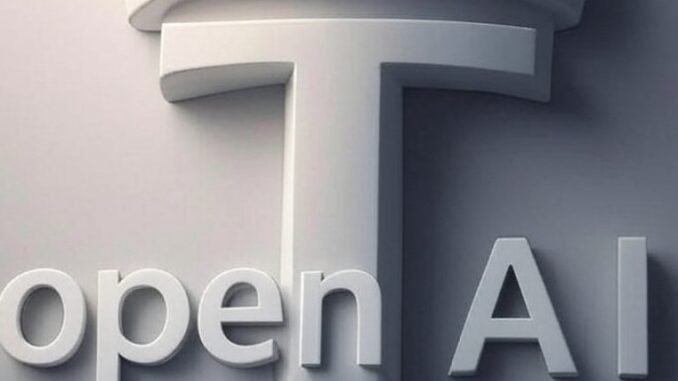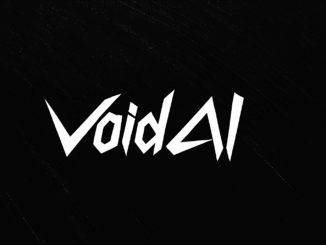
By: Andy
The Biggest AI News Since GPT-2: OpenAI Goes Open Again
After 5+ years of closed development, OpenAI shocked the AI world by releasing gpt-oss-120b and gpt-oss-20b – their first open-weight models since GPT-2 in 2019. This isn’t just another model release; it’s a seismic shift that validates everything Bittensor has been building toward.
Why This Matters for $TAO Holders 💎
1. Validation of the Decentralized AI Thesis
OpenAI’s pivot to open models is essentially an admission that the future of AI isn’t locked behind corporate APIs. When the industry leader acknowledges that “open source enables a broad ecosystem of companies with compatible toolchains that you can move between easily”, it validates Bittensor’s core philosophy.
What this means technically: Bittensor has been right all along. The network’s 128 specialized subnets demonstrate that decentralized, open AI isn’t just idealistic, it’s practical and necessary.
2. Perfect Hardware Match for Subnet Deployment 🖥️
Here’s where it gets exciting for Bittensor miners and validators:
- gpt-oss-20b runs on just 16GB of memory – perfect for edge devices
- gpt-oss-120b needs only 80GB – fitting on a single high-end GPU
- Both use Mixture-of-Experts (MoE) architecture, activating only 3.6B-5.1B parameters per token
Why this is huge: These resource requirements align perfectly with Bittensor’s subnet infrastructure. “Miners in the Bittensor network provide computational resources, running AI models and processing transactions”. Now they can deploy state-of-the-art OpenAI models without massive infrastructure costs.
3. Apache 2.0 License = Unlimited Innovation 🔓
OpenAI chose Apache 2.0 licensing – the most permissive open-source license. No restrictions on commercial use, no “700 million user” clauses like Meta’s Llama.
For Bittensor this means:
- Any subnet can integrate these models
- Validators can fine-tune for specific tasks
- Miners can create specialized versions for healthcare, coding, finance
- No legal barriers to monetization through $TAO rewards
4. The Network Effect Accelerator 🌐
As “open source AI isn’t just an alternative to proprietary systems, it’s becoming the primary driver of AI innovation”, developers need decentralized infrastructure to deploy and monetize their work.
Bittensor provides exactly what’s missing:
- Incentive layer: $dTAO rewards for quality AI contributions
- Decentralized compute: No reliance on big tech infrastructure
- Market-driven pricing: Dynamic TAO system ensures efficient resource allocation
- Specialized marketplaces: 120+ subnets for different AI applications
Technical Breakdown: How OpenAI Models Supercharge Bittensor 🔧
The Subnet Integration Opportunity
Bittensor’s subnets are specialized, self-contained partitions of the network, each designed to handle specific tasks or applications. OpenAI’s models can be deployed across multiple subnet types:
Immediate Integration Opportunities:
- Subnet Example 1: Deploy gpt-oss models for superior text output
- Subnet Example 2 (Code Generation): Leverage OpenAI’s coding capabilities
- Healthcare Subnets: Fine-tune for medical applications (models outperform GPT-4o on HealthBench)
- Tool-Use Subnets: Models excel at function calling and web search
The Economics Get Better
With TAO’s first-ever halving anticipated to occur around December 2025, reducing block rewards from 1 TAO to 0.5 TAO per block, efficiency becomes crucial. OpenAI’s efficient models mean:
- Lower operational costs for miners
- Higher profit margins despite halving
- More accessible entry for new validators
- Better ROI on staked $TAO
Dynamic TAO + Open Models = Perfect Storm
Bittensor’s recent Dynamic TAO upgrade means “emissions flow through a market-driven system using subnet tokens, or Alpha tokens. The price of these tokens reflects market demand for a subnet”.
What happens when you add OpenAI models:
- Subnets with OpenAI integration see increased demand
- Higher Alpha token prices = more TAO emissions
- Better models = more users = more value for $TAO holders
The Bigger Picture: Why OpenAI’s Move Changes Everything 🌍
The Decentralization Race is On
“American scientists, startups and institutions are increasingly driven to build on Chinese open models because the best U.S. models are locked behind APIs”. OpenAI’s release changes this dynamic, but developers still need:
- Decentralized infrastructure (Bittensor provides)
- Incentive mechanisms ($TAO rewards)
- Specialized compute markets (120+ subnets)
- Censorship resistance (blockchain-based consensus)
First-Mover Advantage in Integration
Bittensor subnet developers who integrate gpt-oss models first will:
- Attract more validators (better performance = more staking)
- Generate higher Alpha token demand
- Receive more TAO emissions
- Build network effects before competitors
What This Means for $TAO 📈
Short-Term Catalysts
- Immediate subnet upgrades as developers race to integrate
- New validator interest due to lower hardware requirements
- Enterprise attention as open models + decentralized infrastructure = complete solution
Long-Term Value Drivers
- Network effects compound as more models join the ecosystem
- TAO becomes the default currency for decentralized AI
- Halving December creates supply squeeze
- Institutional adoption as decentralized AI proves superior
Action Items for the Bittensor Community 🎯
For Subnet Owners
- Start testing gpt-oss integration immediately
- Focus on areas where OpenAI models excel (reasoning, tool use)
- Prepare marketing for “OpenAI-powered” subnets
For Validators
- Evaluate hardware requirements for new models
- Research subnets planning OpenAI integration
- Prepare to redirect stake to high-performing subnets
For $TAO Holders
- This validates the long-term thesis – consider accumulating
- Watch for subnet announcements about integration
- Stake to validators focusing on OpenAI-enabled subnets
The Bottom Line 💯
OpenAI’s return to open-source isn’t just validation it’s acceleration fuel for Bittensor. While OpenAI provides the models, Bittensor provides the missing piece: a decentralized, incentivized infrastructure where these models can truly thrive.
The equation is simple:
- Open Models (OpenAI) + Decentralized Infrastructure (Bittensor) = The Future of AI
As “open source Linux gained popularity initially because it allowed developers to modify its code however they wanted and was more affordable, and over time because it became more advanced”, we’re witnessing the same transformation in AI.
Bittensor isn’t just riding this wave it’s the infrastructure that makes the wave possible.
Welcome to the decentralized AI revolution.
$TAO is your ticket. 🚀🧠
Not financial advice. DYOR. But the fundamentals have never been stronger for decentralized AI.




Be the first to comment